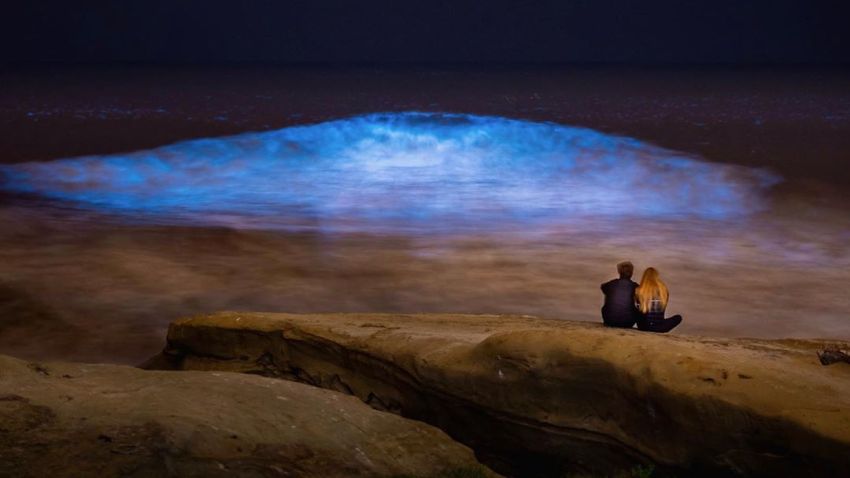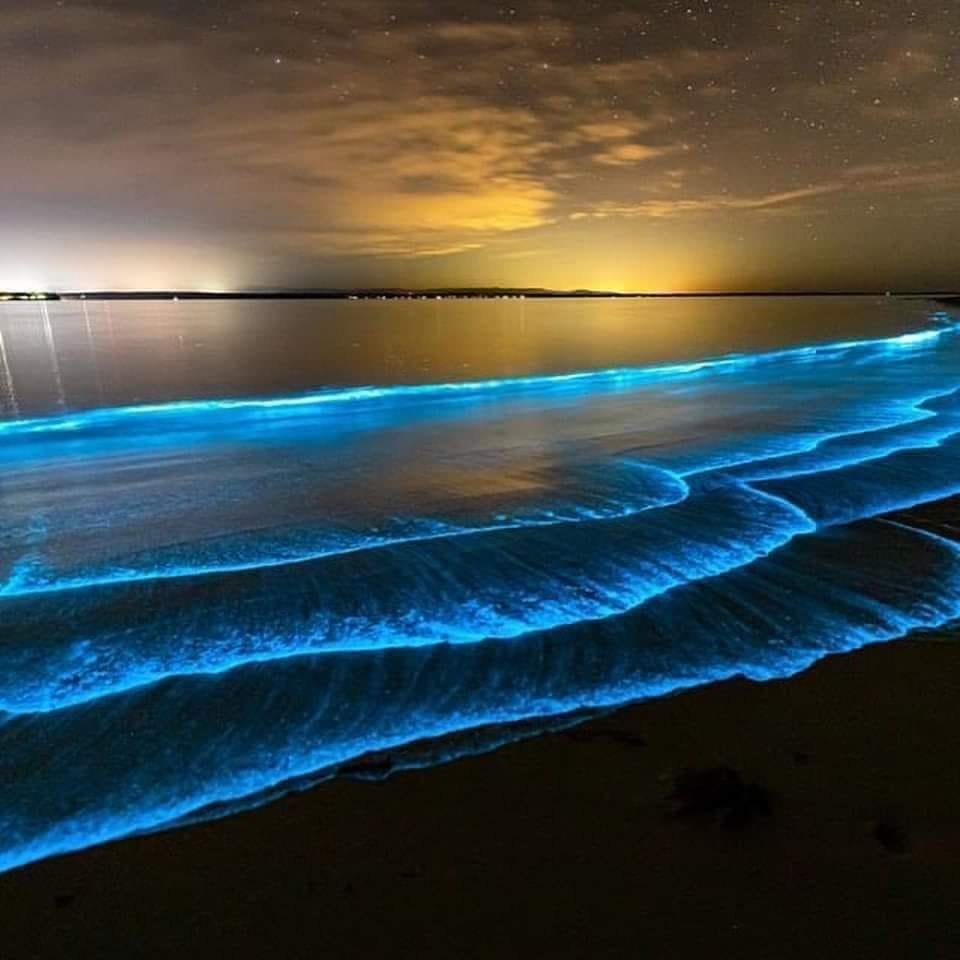Glowing blue waves are reported along the Southern California coast. The bioluminescent blue waves are a result of a massive bloom of phytoplankton. It is a microscopic marine algae that produce their own food via photosynthesis in the waters of the Pacific known as a “red tide.”
Bioluminescence expert Michael Latz, a scientist at Scripps Institution of Oceanography at UC San Diego, said the red tide is due to aggregations of the dinoflagellate Lingulodinium polyedra. They are a species well known for its bioluminescent displays. Each microscopic cell contains some “sunscreen,” giving it a reddish-brown colour. On sunny days, the organisms swim toward the surface where they concentrate, resulting in the intensified coloration of the water. Thus the reason for the term “red tide.” At night, when the phytoplankton are agitated by waves or other movement in the water, they emit a dazzling neon blue glow. [1]
Flocking to the beach
A romantic setting for couples, residents are also been flocking to the beach to witness the glowing blue waves.

Dolphins glow in the waves
Dolphins are spotted in the rare bloom of microscopic organisms turning neon blue themselves!
“We don’t know how long the current red tide will last, as previous events have lasted anywhere from one week to a month or more,” the institution wrote on Facebook. If you want to see it for yourself, they suggest that you “head to a dark beach at least two hours after sunset.”
To learn more about this natural phenomenon, visit Scripps Institution of Oceanography.


